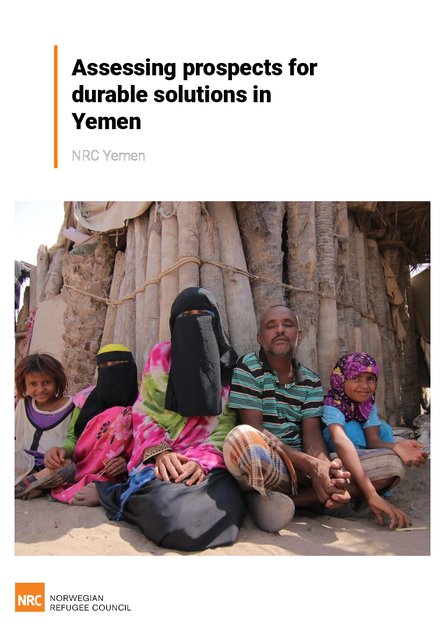
This report includes valuable insights and analysis on Yemeni displaced households’ intentions and preferences in regards to durable solutions. The report concludes that despite the complications and challenges linked to durable solutions in Yemen, there are several prospects to advance this agenda in the country.
Majority of the surveyed households (70%) have been displaced for over three years. The main reason for displacement is insecurity and/ or active conflict, coupled with lack of livelihood opportunities. Most of these have been displaced from Hajja (54%), Hodeida (21%), and Taiz (20%) which are governorates that are currently experiencing active conflicts. The survey identified that two thirds of the assessed population preferred to return to Areas of Origin (AoO) compared to one third who expressed interest to locally integrate at the place of displacement (PoD). Of those who showed interest to return, only 38% demonstrated an intention to return within a period of six months – IDPs in Lahj (Tuban) and Taiz (Mokha) have shown the greatest desire to return within six months among the group. The other 62% who have opted for return as a durable solution, indicated that they would not return immediately or within the next six months due to insecurity at the place of origin and/ or lack of livelihood opportunities. The key conditions for return were identified as improved security situation and access to employment and/ or livelihood opportunities. The assessment identified lower intentions toward local integration, with the exception of Amran city where 90% of the respondents expressed the desire to locally integrate.
Only one third of those surveyed were inclined to locally integrate. The preference for local integration was attributed to safety and security coupled with the desire to find employment and/ or livelihood opportunities at the place of displacement. The main conditions put forward for local integration included access to livelihoods and/ or employment opportunities, access to housing or land, safety and security, as well as access to basic services, mainly education and health care.
In summary, the assessment identified prospects for durable solutions with specific emphasis on returns as a favorable option, and highlighted the potential to pilot local integration in a few locations. In both options, IDPs will require adequate support in order for them to realise a sustainable solution to their displacement.